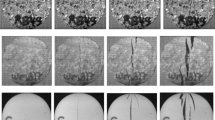Abstract
This study outlines the mechanical properties of an explosive material tested at AWE Plc, Aldermaston, Reading, Berkshire, UK. The material is a composite polymer bonded explosive of energetic binder and HMX crystals, referred to as EDC37. An understanding of material deformation under a range of conditions and age, along with damage quantification, is required to predict mechanical behaviour throughout service life. The mechanical testing of EDC37 was performed alongside simultaneous recording of Acoustic Emission (AE) data at static strain rates and temperatures. The simultaneous testing was intended to focus on the link between mechanical properties and damage evolution. Forty tests were performed in various configurations, consisting of live explosive material and an inert simulant. Evaluation of the Acoustic Emissions was performed and data grouped into categories of activity. It was concluded that AE confirms mechanical behaviour associated with damage accumulation in compression (crack initiation and growth, crack closure and/or HMX twinning) and crack damage (binder HMX debonding and coalescence) above a threshold stress or time in tension. The activity seen is different between tensile and compressive modes and needs to be taken into consideration in Finite Element Models.
Similar content being viewed by others
References
P. BOLTON et al. “A comparative study of techniques for the determination of particle properties of crystalline explosives, Energetic Materials Structure and Properties,” in 35th International Annual Conference of ICT, June 29–July2, 2004, pp. 65-1–65--13.
R. GOVIER, The study of Thermally Induced Phase Transitions in a Nitrocellulose and K 10 Polymer Binder System, Degree Thesis, Brunel University and Trowbridge College, April 2000.
W. D. CALLISTER, “Materials Science and Engineering an Introduction,” 6th edn. (Wiley International Edition, 2003).
A. G. BEATTIE, “Acoustic emission, principles and instrumentation,” J Acoust Emiss, vol. 2, nos. 1/2, Acoust Emiss, Group, 1983.
J. R. MATTHEWS, “Acoustic Emission—NDT Monographs and Tracts”, (Gordon & Breach Science Publishers Inc., New York, 1983).
J. C. ANDERSON et al. “Materials Science”, 4th edn. (Stanley Thornes Publishers Ltd, 1998) p. 311.
FANG and BERKOVITS, Trans. ASME, 117 (1993) 200.
P. RAE et al., Proc. of Royal Society 458 (2002) 2019, 743–762.
PRIVATE COMMUNICATION, S. PALMER, “Cavendish Laboratory”, (Cambridge University, England).
L. JINGRUN et al. Monitoring the Damage Evolution of PBX by Acoustic Emission, Proc. of the 4th International Autumn Seminar on Propellants, Explosives and Pyrotechnics, 2001.
Author information
Authors and Affiliations
Rights and permissions
About this article
Cite this article
Ellis, K., Leppard, C. & Radesk, H. Mechanical properties and damage evaluation of a UK PBX. J Mater Sci 40, 6241–6248 (2005). https://doi.org/10.1007/s10853-005-3148-4
Received:
Accepted:
Published:
Issue Date:
DOI: https://doi.org/10.1007/s10853-005-3148-4




